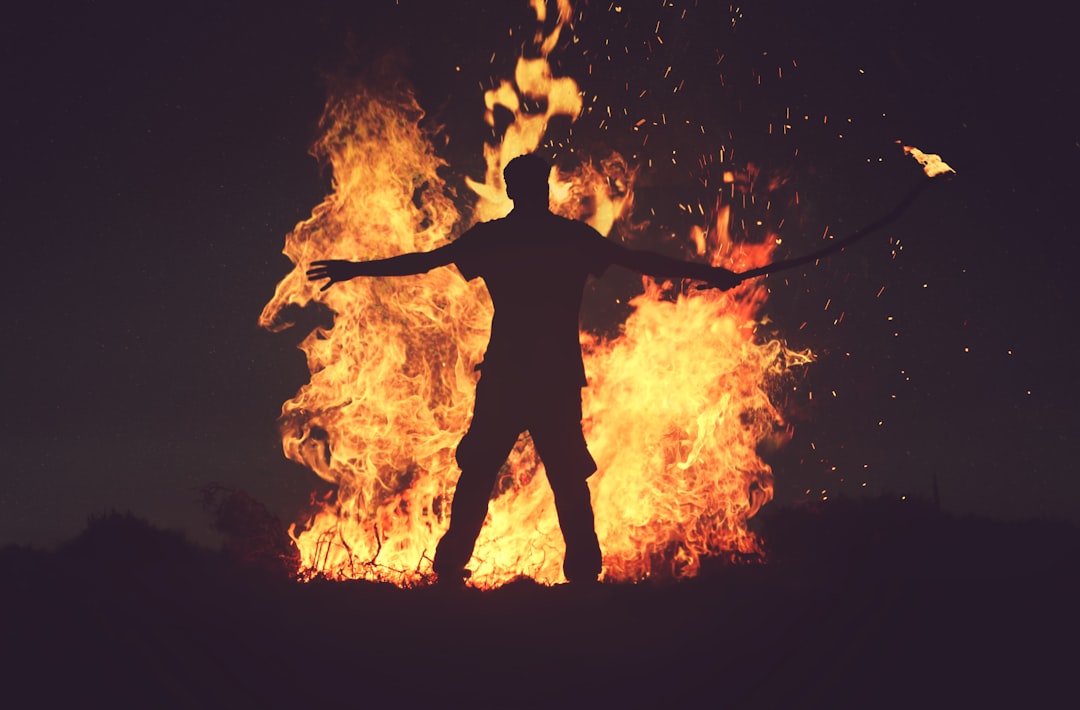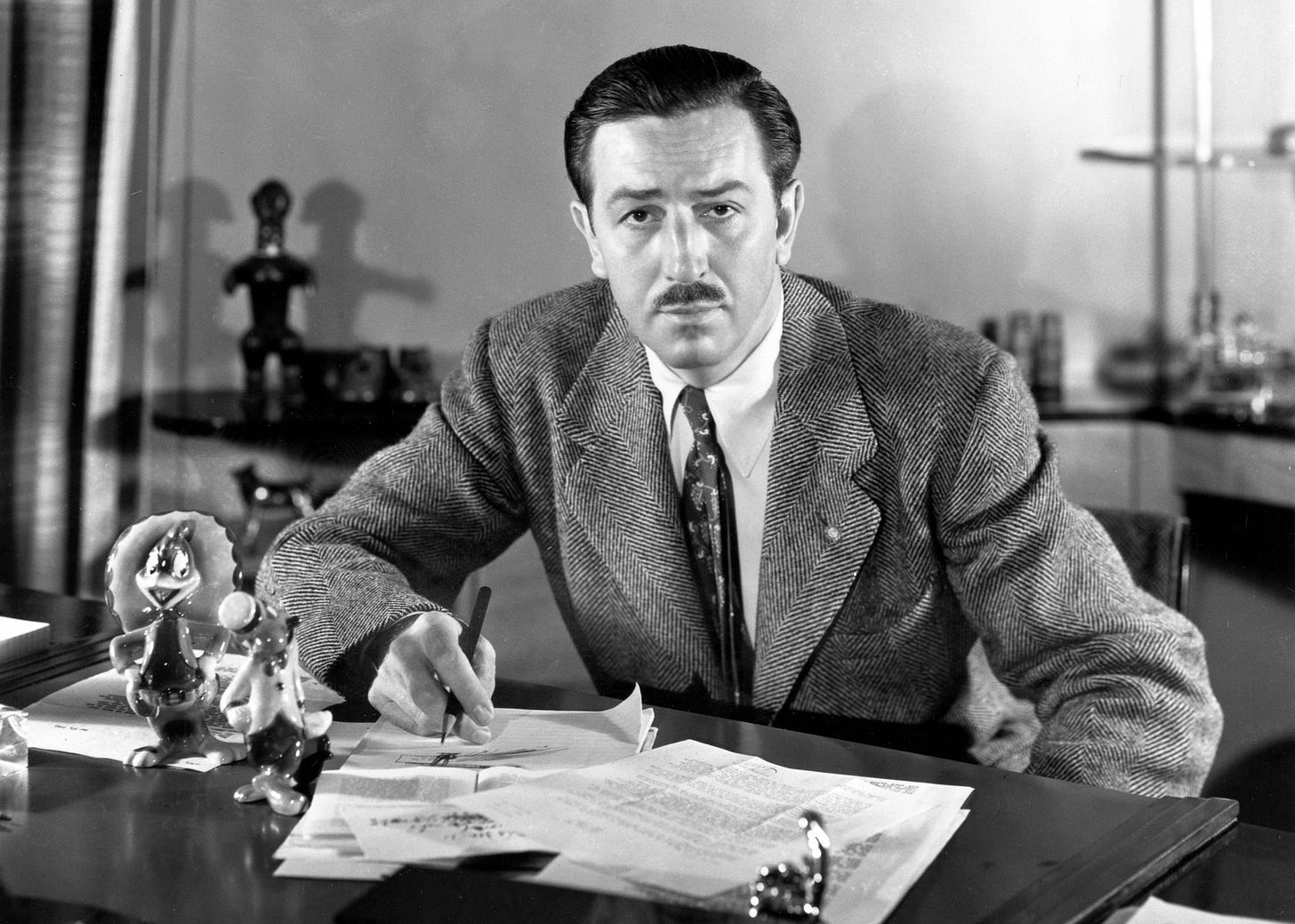
Last week I stepped away from my desk for a few days. I wanted to give my mind a brief reprise and give the subconscious a quick rinse. And what better way to do that than with some good old fashioned Numbing Glass TV. Although I must admit, I wanted to avoid feeling guilty in the end, instead of choosing a Big Mac of trashy TV, I opted for the Mickey D’s chicken salad equivalent - a documentary.
What originally started as a way to distract myself soon inspired this topic and the burning need to write about it. My subconscious mind (the true author of The Pulp Fictioneer) made a few observations I wanted to explore.
Let’s begin.
PBS’ American Experience: Walt Disney
Released in 2015, American Experience on PBS covered an intimate look at the life of Walt Disney, showcasing his humble beginnings, his failures, the struggles of starting a company, union strikes, model trains, and the building of Disneyland.
Admittedly, this was my second viewing. Back in 2018, I was out of work and previously spent three weeks in psychiatric units for manic depression. Being released from the hospital with a new diagnosis, pumped with new drugs, and out of work for months left me feeling weak, tired, and down all the time. To distract myself from feeling like shit, I looked to the Tube and found the Walt Disney documentary. I enjoyed it. At the time, it was the perfect pick-me-up I needed to rise out of bed and tackle my life again.
Fast forward to 2022, out of work and raising my 11 month old son, I watched the Disney documentary again, this time with fresh eyes.
What changed?
I saw the fire, the creative vitality that Disney had in his eyes when he set out to build his first animation studio and again when he founded Disney Bros. and again when gathered his small team with the idea for the film Snow White and again when fell in love with model trains and again when he envisioned Disneyland and EPCOT.
What I couldn’t recognize during my first viewing at 26, I suddenly noticed at 30 - the drive and desire to build something bigger than oneself: a studio, a company, a theme park, an art form. I somehow felt myself relating to a pioneer. While the House of Mouse is no longer the scrappy, little animation studio led by a man with a passionate vision for the future of cartoons and film, his energy from the early Laugh-O-Gram days was palpable and I understood it well, the growing fire in ones belly to create art, to paint, to craft, to sculpt, to write, to build with other up and coming creative people who are just as crazy and just as driven as you is blessing not many people will get to experience. But I hope they do.
It is that same spirit I felt back when I was making my own comic books when I was a kid; the spirit needed to come out of me in the form of something fresh, new, and exciting. It is a volatile and aggressive force that you simply can’t measure. Artists, entrepreneurs, athletes, and people with Bipolar recognize this force. It is almost a euphoric feeling, a sense of “let’s go after it” attitude fills you with more energy than you know what to do with. Pair that with a group of young, gritty creative aspirants that want to make some cool shit and you’re on your way to building a movement.
I truly hope we see more creative movements. There are discussions online claiming the creative culture has peaked, that the most innovative and interesting creative people are long gone or bought out by the corporate elite. “Our best years are behind us” kind of thing or that the world crashed after 1999.
Honestly, they may have a point.
I won’t go into all the reboots and remakes of mainstream film, or comic books, or the music scene, or the state of publishing. You don’t have to look far for those discussions. But I understand that feeling of being stagnant or being in a cultural hamster wheel. Have faith, dear reader, for it is not all dark and gloomy thanks to the growing market of independent artists and creators. More and more creative cliques are developing in smaller pockets thanks to the internet. The late 60s birthed the New Hollywood movement and gave us George Lucas, John Milius, Steven Spielberg, Francis Ford Coppola, and Martin Scorsese. The New Wave movement of Science Fiction included Harlan Ellison, Ursula K. Le Guin, Roger Zelazny and others.
I’m lucky enough to have found my tribe of storytellers and aspiring professional writers that both inspire and challenge me to really build something special and take the world by storm. Creative vitality and that powerful spirit are indeed infectious and can spread like wildfire once you get a small spark going.
If you’re reading this and have something you’re working on that keeps fills you with creative vigor or know someone who also possesses that spirit, then share in the comments.
In a world that seems to be hell-bent on rehashing, deconstructing, and reacting to the art of the past, my hope is that we will still produce a culture of builders and artists seeking to create something new and inspiring.
I look forward to the next creative movement that embodies that fire and pioneers the next great independent art form.
‘Till next time
Enjoyed this essay? You can leave a tip below and support The Pulp Fictioneer




Beautiful! I’ve never been one for the school of thought that all originality is dead. I get the inclination, of course. As you said, we live in a world that seems hell-bent on the remake.
But even if we are telling the same stories over and over again, I also believe that there’s always room for ingenuity and creativity, and I’d certainly prefer choosing to believe that than the alternative.
Also, this feeling is something else: “the spirit needed to come out of me in the form of something fresh, new, and exciting. It is a volatile and aggressive force that you simply can’t measure…”
Yes. Thank you for this!